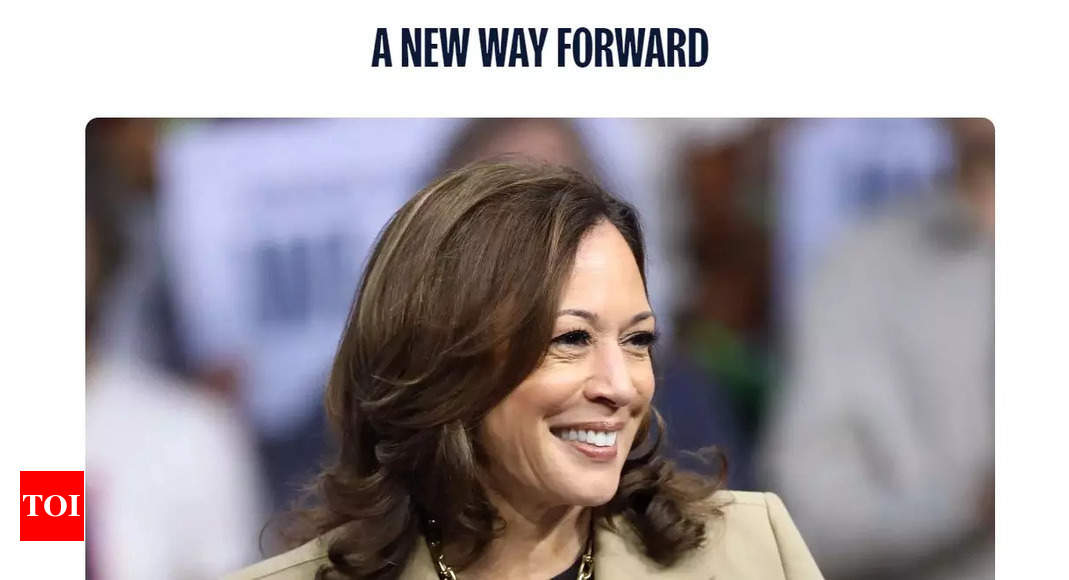
The detailed agenda, developed in collaboration with Minnesota Governor Tim Walz, lays out a vision for building a fairer economy, protecting civil rights, and addressing pressing national concerns like healthcare, climate change, and gun violence.Harris’ proposals contrast sharply with former President Donald Trump’s “Project 2025” agenda, offering voters a stark choice on the direction of the nation.
Here’s an in-depth look at Harris’ key policy pillars and how they compare with Trump’s plans:
At the heart of Harris’ economic plan is the creation of an “Opportunity Economy” that aims to give every American a chance to thrive, regardless of where they live. Harris emphasizes the importance of strengthening the middle class as a way to bolster the overall economy. Her agenda includes cutting taxes for more than 100 million working- and middle-class Americans, expanding the Child Tax Credit, and restoring the Earned Income Tax Credit. Harris promises a $6,000 tax cut for families with newborn children and asserts that her administration will ensure that no one earning under $400,000 will see a tax increase.
In contrast, she claims Trump’s “Project 2025” focuses on providing tax cuts for the wealthiest Americans and corporations. Harris highlights the need for a fairer tax system, proposing a billionaire minimum tax and a rollback of Trump’s tax cuts for the wealthiest. She plans to quadruple the tax on stock buybacks and increase the long-term capital gains tax to 28% for those earning over $1 million annually. Harris’ tax reforms aim to make the wealthiest play by the same rules as the middle class, helping reduce the federal deficit while fuelling broad-based economic growth. According to Harris, Trump’s plans would further burden the middle class by raising everyday costs through policies like a Trump sales tax on imported goods, which she estimates would add $3,900 per year to household expenses.
Strengthening Healthcare
Harris’ “New Way Forward” emphasizes lowering everyday costs for families, including healthcare, housing, and groceries. She is committed to expanding the Affordable Care Act (ACA) and making its tax credit enhancements permanent, which would lower healthcare premiums for millions of Americans by an average of $800 annually. In addition, Harris supports capping insulin costs at $35 for all Americans, not just seniors, and is focused on making prescription drugs more affordable by allowing Medicare to negotiate drug prices—a key feature of the Biden-Harris administration’s Inflation Reduction Act.
On the other hand, Trump’s healthcare agenda seeks to dismantle the ACA altogether. Harris claims “Project 2025” plan would end the Affordable Care Act, which could leave millions of Americans without affordable healthcare coverage. Trump has also expressed intentions to weaken Social Security and Medicare, programs Harris pledges to protect and expand. Harris’ agenda further contrasts with Trump’s, as she aims to protect healthcare access, ensure no one faces medical bankruptcy, and continue efforts to reduce the cost of prescription drugs.
Small businesses are a key component of Harris’ Opportunity Economy. She highlights her work in the Biden-Harris administration to support small businesses, including expanding access to capital and tripling the Small Business Administration’s lending to Black-owned businesses. Harris’ plan is ambitious: she aims for 25 million new business applications by the end of her first term, supported by policies that reduce red tape and expand the startup expense tax deduction from $5,000 to $50,000. She emphasizes investing in entrepreneurs from underserved regions and increasing federal contract dollars for minority-owned businesses.
The page claims, in contrast, Trump’s economic agenda has historically favoured large corporations and the wealthiest individuals. His policies largely benefit big businesses through tax breaks and deregulation. Harris argues that under Trump, small businesses and middle-class entrepreneurs were often overlooked, with many struggling to survive due to a lack of support during his presidency.
Tackling Corporate Abuse and Reducing Consumer Costs
As part of her efforts to lower consumer costs, Harris plans to crack down on corporate price gouging and anti-competitive practices. She advocates for the first-ever federal ban on corporate price gouging on essentials like food and groceries, building on existing state laws. Harris believes that unchecked corporate power allows companies to inflate prices, and she is committed to creating a more competitive economy that benefits consumers, not just corporations.
Climate Action and Lowering Energy Costs
Harris’ climate agenda builds on her efforts as Vice President, where she helped pass the Inflation Reduction Act, the largest climate investment in U.S. history. Harris emphasizes the need for continued investments in clean energy and environmental justice. Her plan would further reduce household energy costs while creating millions of clean energy jobs. She is committed to holding polluters accountable and promoting global cooperation to tackle climate change, as demonstrated during her address at the COP28 climate summit.
On the other hand, Harris accuses Trump of repeatedly downplaying the urgency of climate change and rolling back environmental protections during his presidency. His support for fossil fuel industries like coal and Big Oil remains a cornerstone of his economic policy. Trump’s deregulation policies enabled oil companies to profit at the expense of environmental safeguards, something Harris is determined to reverse.
Protecting Civil Rights and Expanding Voting Rights
Harris has been a vocal advocate for civil rights throughout her career. In her “New Way Forward,” she outlines plans to pass the John Lewis Voting Rights Act and the Freedom to Vote Act, which would expand access to early voting and vote-by-mail while safeguarding against voter suppression. Harris also pledges to fight for LGBTQ+ rights, including passing the Equality Act to enshrine protections against discrimination in housing, healthcare, and education.
Trump’s “Project 2025” agenda, according to Harris, poses a direct threat to civil rights and voting protections. Trump’s rhetoric and actions after the 2020 election, including his efforts to overturn the results, have been widely criticized as undermining democracy. Harris argues that his agenda would continue to suppress voting rights and roll back protections for marginalized communities, including LGBTQ+ Americans.
Gun violence prevention is another central focus of Harris’ platform. As Vice President, she helped pass the first major gun safety legislation in 30 years and has led efforts to establish the White House Office of Gun Violence Prevention. Her plan as president includes banning assault weapons, expanding background checks, and implementing red flag laws.
In contrast, Harris says Trump’s stance on gun control has largely been aligned with the gun lobby. He has called for arming teachers in schools and has shown little support for comprehensive gun control measures. Harris contends that Trump’s approach would exacerbate gun violence, while her policies aim to reduce crime and create safer communities.
Immigration Reform and Border Security
Harris adds that the campaign is committed to comprehensive immigration reform that balances border security with a humane approach to immigration. She plans to reintroduce a bipartisan border security bill that would deploy more resources to intercept fentanyl and other illicit drugs. At the same time, she advocates for an earned pathway to citizenship for undocumented immigrants, reflecting her belief that America’s immigration system is broken but fixable.









